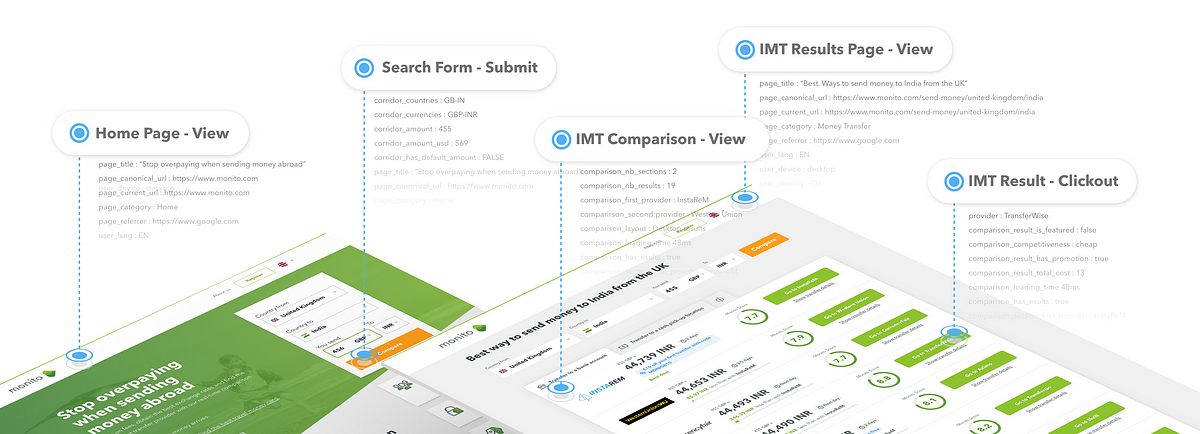For most digital products, out-of-the-box analytics solutions don’t give you the level of details you need to understand how users behave when using your product.
Don’t get me wrong, Google Analytics is great, and customizing how you use it by sending custom events and goals is an excellent first step to start tracking what matters for your product.
But eventually, you’ll want to move to an event-based tracking solution, where you set-up all the events you want to track and their associated properties, and send them to a tool like Mixpanel or Amplitude.
Chances are that — like myself — you’re working on a rapidly changing product, where new features get added, and the complexity of the things you want to track increases regularly.
As a product manager at Monito, I’ve learned it the hard. In the absence of a structured framework and robust naming convention, your analytics software can quickly become a mess that fewer and fewer people can use without your help. As a result, you analyze your data less often, and when you do, you have to deal with a lot more inconsistencies.
In the past four years, our comparison platform for international money transfer services went from a few thousand visits a month to close to a million. In the meantime, the number of data points we tracked went from a few thousand… to 125 million a month!
We decided to start from scratch and put a lot of thought into how to develop a tracking framework and naming conventions that would make it easier for everyone in the team to make their analysis while making sure it would scale with our product.
#data-science #analytics #event-tracking #tracking #mixpanel
